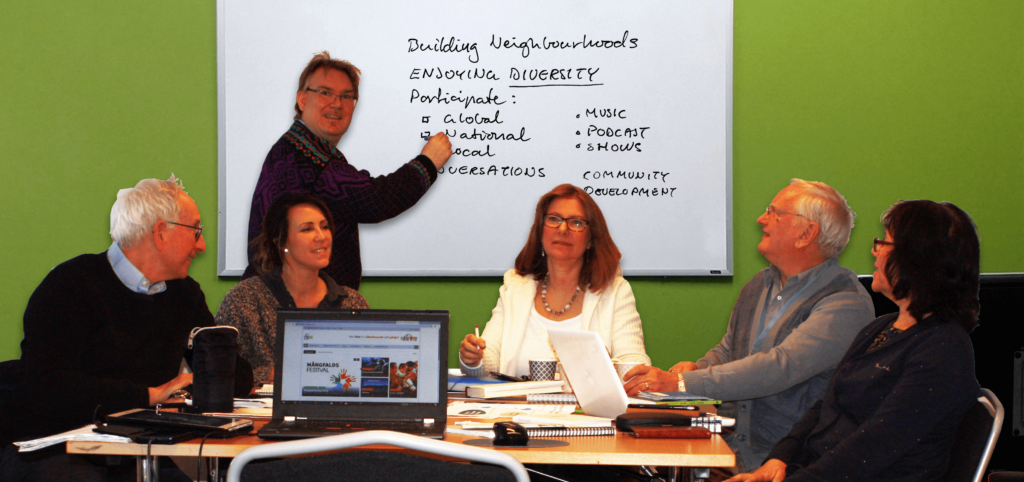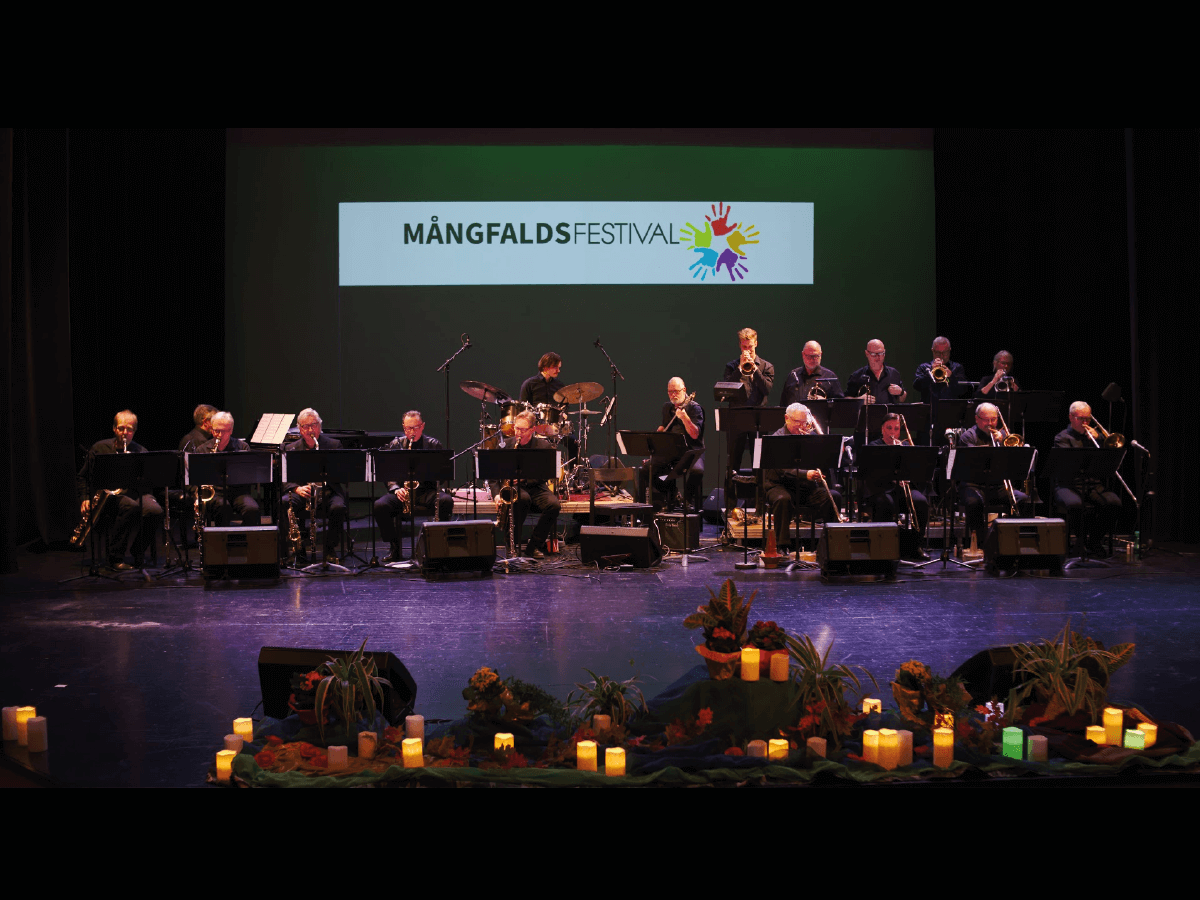Create learning environments
As we gather in our neighborhood, let’s consider our shared interests and how we can leverage them for the betterment of our community. Let’s initiate workshops celebrating our diverse passions. We should foster social projects. Projects that enrich our lives and enhance our neighborhoods.
Workshops and festivals shaping neighborhoods
Neighborhood development is an example of this in Sigtuna, Sweden. George Graham Foundation has focused on several neighborhoods, often with significant problems. With this question in focus, we have identified at least 10 workshops. They include multicultural music, dance, cooking, gardening, storytelling, sand/water painting, soccer, family life, podcasting, and health.
Enhance and enrich the neighborhood
Workshops develop the neighborhood: people become more active. They can participate in semi-annual diversity festivals. We learn and enjoy the differences between each culture. Great perspectives and appreciations are experienced – thus, fear of meeting differences changes to whole-hearted enjoyment as we enhance and enrich the neighborhood.

How do we mobilize neighborhoods?
Discovering and mobilizing local resources in a neighborhood involves identifying the assets and strengths within the community and leveraging them for collective well-being. Here’s how to do it:
- Community Asset Mapping: Engage residents in identifying local resources, talents, skills, and assets. Create a comprehensive map or directory of these resources.
- Community Surveys: Conduct surveys and interviews with residents to gain insights into their skills, interests, and what they can contribute to the community.
- Collaboration with Local Organizations: Establish partnerships with local businesses, schools, churches, libraries, nonprofits, and other institutions to tap into their resources and networks.
- Volunteer Networks: Create and promote volunteer networks to encourage residents to donate their time and skills for community projects and initiatives.
- Community Garden and Agriculture: Develop community gardens and urban agriculture projects where residents can grow fresh produce and contribute to food security.
- Local Arts and Culture: Celebrate and support local artists, musicians, and cultural organizations to showcase the neighborhood’s cultural assets.
- Skill Development Programs: Offer training and skill development programs, including workshops, classes, and certifications, to empower residents with new skills and knowledge.
- Local Business Support: Encourage entrepreneurship by supporting and promoting local businesses and startups, especially those owned by residents.
- Youth Engagement: Engage young people in community activities and initiatives, providing them opportunities to contribute their talents and energy.
- Intergenerational Programs: Create programs that bridge generations, enabling older residents to share their knowledge and experiences with younger community members.
- Community Centers and Hubs: Establish community centers or hubs where residents can access resources, host events, and connect with one another.
- Library Resources: Utilize local libraries as hubs for information, education, and community engagement. Libraries often offer free resources, meeting spaces, and educational programs.
- Public Spaces and Facilities: Use public spaces like parks, recreational areas, and schools for community events, meetings, and activities.
- Environmental Resources: Engage in sustainable practices that utilize the local environment, such as recycling programs, energy efficiency initiatives, and green spaces.
- Local Wisdom and Traditions: Celebrate and preserve local traditions and cultural practices passed down through generations.
- Local Leadership: Identify and empower community leaders who can mobilize resources and lead neighborhood development efforts.
- Supportive Policies: Advocate for local policies that promote resource-sharing, community development, and the well-being of residents.
- Regular Community Meetings: Host regular community meetings and forums to discuss resource mobilization and collaborate on initiatives.
- Recognition and Celebration: Acknowledge and celebrate the contributions of residents and organizations to the neighborhood’s resource pool.
- Measurement and Evaluation: Continuously assess the utilization and impact of local resources and adjust strategies accordingly.
Enhance neighborhood quality
By discovering and mobilizing local resources in a neighborhood, residents can collectively work toward community improvement and well-being. This process enhances the quality of life and fosters a sense of ownership and pride in the community.
By discovering and mobilizing local resources in a neighborhood, residents can collectively work towards community improvement and well-being. This process not only enhances the quality of life but also fosters a sense of ownership and pride in the community.
